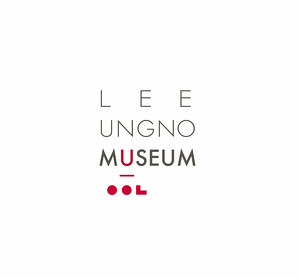Lee Ungno and Calligraphic Abstraction in Europe
October 4–December 18, 2016
Deajeon Museum of Art Hall, 155, Dunsan-daero, Seo-gu Daejeon, South Korea
157 Dunsan-daero 117beon-gil
Seo-gu Daejeon
South Korea
Lee Ungno Museum presents Lee Ungno and Calligraphic Abstraction in Europe, which explores the calligraphic abstract style of Henri Michaux, Georges Noël and a Korean-born French painter Lee Ungno within the context of modernist abstract painting. This exhibition links East Asian calligraphy and European abstract paintings in the art of Henri Michaux, Lee Ungno and Georges Noël. These three artists all exhibited at the Galerie Paul Facchetti, Paris during the 1950s and the ‘60s and individually developed their calligraphic abstract styles by combining written characters with pictorial signs, or synchronizing the act of writing with the act of drawing.
English art critic Sir Herbert Read, in the preface to the second edition of Chinese Calligraphy (1938) by Chiang Yee, wrote that artists such as Michaux, Soulages, and Hartung were at least in part directly inspired by Chinese calligraphy, while discussing the analogy between the aesthetic of Chinese calligraphy and the aesthetic of Western abstract painting. East Asian calligraphy would be compared not only to the brushworks of European abstract painters but also to those of American expressionists such as Franz Kline and Willem de Kooning. However, Clement Greenberg did not think that Asian calligraphy inspired Abstract Expressionists painters; he rather commented on the resemblance between calligraphy and a certain mode of American expressionism, arguing any similarity was an effect of convergence at the most, and of accident at the least, in his essay “American-Type Painting.”
In post-war Japan, avant-garde calligrapher Morita Shiryu’s Bokujin-kai (“Ink Human Society”) led an art movement that intended to break the barrier between calligraphy and abstract painting. Their unconventional style of calligraphy showed characters visually abstracted, time-based strokes/gestures, which were acclaimed in Western art world during the 1950s. From a Western perspective, the possibilities of calligraphy as painting were also tested in the works of Mark Tobey and Morris Graves. In this atmosphere, the term “calligraphic art” was used to refer to the synthesis between Eastern and Western art made during the 1950s and the ‘60s, since Michel Seuphor had used it to describe Japanese avant-garde calligraphy in his book Dictionary of Abstract Painting (1957).
Besides the visual similitude between the brush strokes of calligraphy and abstract painting, of writing and drawing, we can also analogize the aesthetic of calligraphy and the aesthetic of abstract painting, emphasizing the time-based “movements” of the artists. The action inherent in an Abstract Expressionist or Informel painting leads us to focus more on the situation of creation, the time-based performance of an artist, than the art itself. Through their gestural brushworks, Noël and Michaux filled their canvases with their unconsciousness and body movements, and defined a canvas as a stage for existential explorations. Similarly in calligraphy, characters are written in one breath with a calligrapher’s controlled movements in the flow of time. This intersection between both art forms could be where the art of Lee, Noël, and Michaux arose in relation to mind, corporeality and time.
Noël blended pure pigments, sand, and glue in order to produce a highly sensitive surface, on which he left impulsive scratch marks, erasures, and written forms that expressed the flow of his physical actions and internal state. Synchronizing the act of drawing with the act of writing in this way, he created new images. Michaux explored the interior of an existence through gestures, alphabetic signs and the nature of Chinese ink. Learning the potential of calligraphy as an abstract art form in his trips to East Asia, Michaux created calligraphic abstractions that captured the artist’s internal upheavals using the fluidity of Chinese ink in an instant reaction to the movements of an artist’s brush. Lastly, Lee worked with calligraphic strokes to create a modern style of painting. Holding fast to his identity as an ink painter, at the same time he employed various experimental art forms of modernist artists to develop his abstract form, in which elements of Eastern and Western art freely combine.



